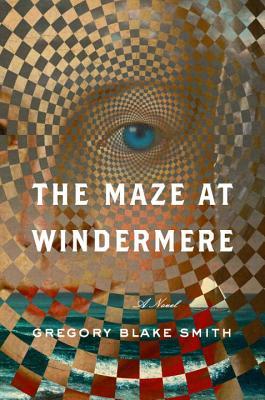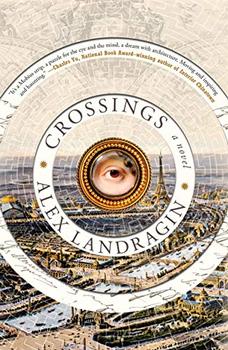Summary | Excerpt | Reviews | Beyond the book | Read-Alikes | Genres & Themes | Author Bio

First impressions can be deceiving. Take in the Cliff Walk in Newport, Rhode Island, and the casual tourist gets a peek at the level of opulence that made the resort town once wear the moniker, "The Venice of America." The DuPonts, the Vanderbilts and other wealthy families made Newport their summer home and their luxurious mansions are popular attractions even today.
By diving into the lives of the latter-generation DuPont family, The Maze at Windermere confirms a commonly held narrative about Newport being for movers and shakers. But it also peels the dazzling veneer off, traveling back and forth in time, centuries apart, to reveal a more rounded picture of the seaside town through the ages.
There are five different stories unspooling along parallel threads: in somewhat contemporary 2011, a professional tennis player who has lost his mojo, Sandy Alison, is trying to find himself and juggles multiple love affairs with the women of Newport, including Alice du Pont, the disabled heiress of the Windermere estate. In 1896, Franklin Drexel too tries to gain a leg up in Newport high society by putting a lid on his homosexuality while wooing the widowed Ellen Newcombe. In 1863, writer Henry James decides to pursue his true calling while giving up law against the wishes of his father. Further back in time, the story traces the Jewish roots of Newport while narrating the story of a mentally unstable British soldier who falls in love with a young local Portuguese Jewish girl. Finally, at a time when the Salem witch trials are happening elsewhere in New England, in 1692, young Prudence Selwyn is forced to take charge of her household, including the affairs of a slave, after she finds herself orphaned when her father does not return from sea.
Despite the centuries that separate the stories, common themes readily emerge: characters looking for love (often in all the wrong places) and the lost trying to find safe harbor in a place they can call home. The metaphorical theme of the "maze" that leaves the characters rudderless resonates throughout. Sandy is eager to make a new life in Newport but is unsure of his standing in the seemingly cut-throat high society. And Prudence is ill equipped to understand the moral framework with which she must handle the affairs of her slave while still trying to keep the family hearth going.
Smith's research into the rich history of Newport is on full view here as he expertly weaves exquisite imagery into every finely detailed scene. At times though the narrative feels too heavy-handed, hitting us over the head with the weight of all that history. Alice, for example, marvels where:
...the pirates hanged on Gravelly Point, the Depression-era nuns living in Hunter House, the Quakers in their prim, small-windowed homes….She showed him some of the houses her grandmother had been involved in saving, one of them the house where the Vicomte de Noailles had lived during the Revolution, another a tiny building on Willow Street where there had lived an infamous Jamaican slave who announced to anyone who would listen that she was a witch. At one point they walked out the length of the Elm Street Pier until the shore vanished behind them and there was nothing but vacant gray in front of them and the bleating of the foghorns.
Smith must be commended for maintaining suspense across five different story lines. Rich with vivid metaphors — "quaint houses and their backs bent and their shoulders rounded with age" — for the most part, the narrative engages the reader enough to keep the pages turning. It is only when the characters are less than fully realized that the story suffers. The Henry James storyline set in 1863 for example, could have been completely removed and the reader would have been none the wiser.
Above all, by situating each set of characters squarely in history, Windermere succeeds in delivering a full-bodied portrait of the evolution of our very definition of status and what it really means to make it in the New World.
![]() This review was originally published in The BookBrowse Review in January 2018, and has been updated for the
February 2019 edition.
Click here to go to this issue.
This review was originally published in The BookBrowse Review in January 2018, and has been updated for the
February 2019 edition.
Click here to go to this issue.

If you liked The Maze at Windermere, try these:

by Anne Michaels
Published 2025
A breathtaking and ineffable new novel from the author of the international best sellers Fugitive Pieces and The Winter Vault—a novel of love and loyalty across generations, at once sweeping and intimate

by Alex Landragin
Published 2021
Alex Landragin's Crossings is an unforgettable and explosive genre-bending debut--a novel in three parts, designed to be read in two different directions, spanning a hundred and fifty years and seven lifetimes.
The secret of freedom lies in educating people, whereas the secret of tyranny is in keeping them ignorant
Click Here to find out who said this, as well as discovering other famous literary quotes!
Your guide toexceptional books
BookBrowse seeks out and recommends the best in contemporary fiction and nonfiction—books that not only engage and entertain but also deepen our understanding of ourselves and the world around us.